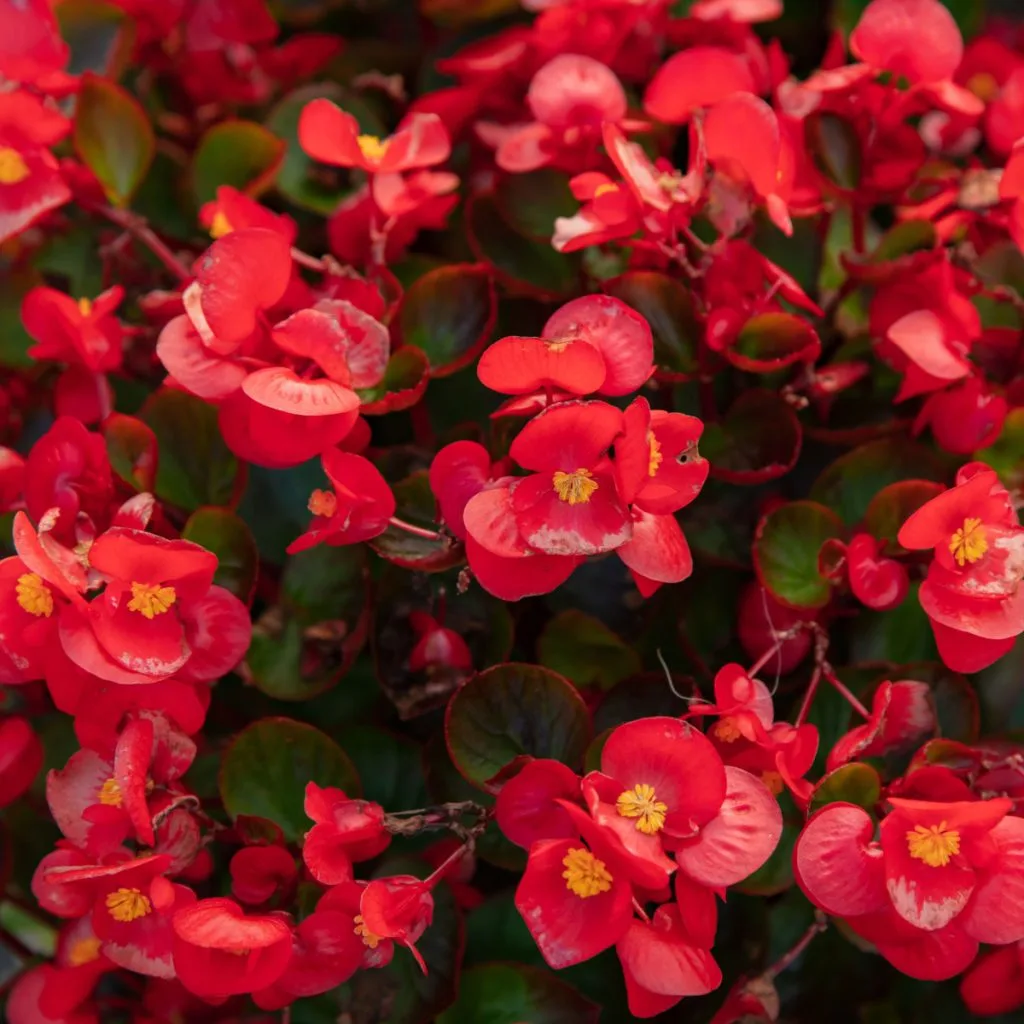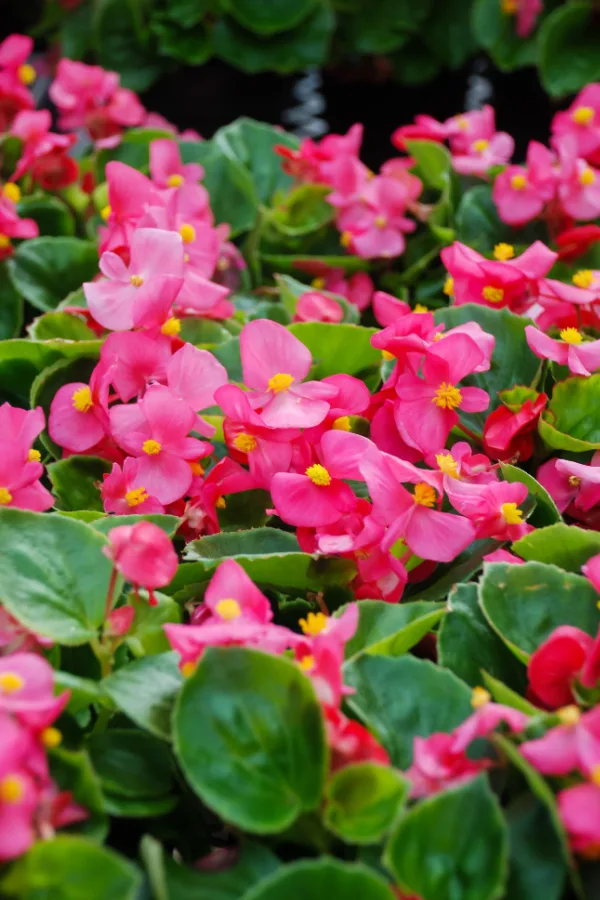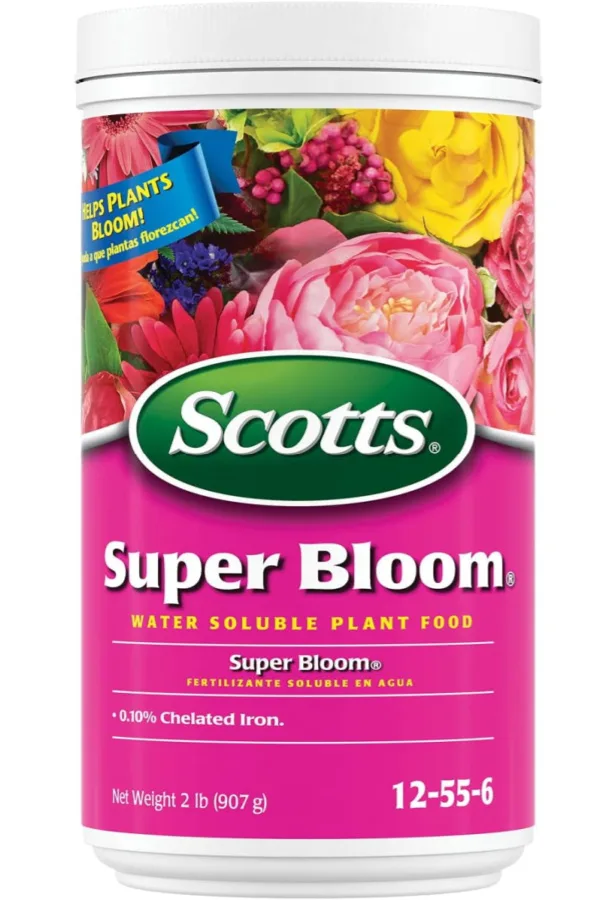Looking for a few secrets to keep your begonias blooming big and strong all summer long?
Begonias are a popular annual for growing in hanging baskets, containers and flowerbeds. With their dense, waxy, tropical foliage and vibrant flowers, they add instant color and interest wherever they grow – especially when they are flowering with gusto!
But for many gardeners, getting their begonias to continue blooming all through the summer and late into fall can be a challenge. Is it the summer heat? Not enough water or fertilizer? Or have the plants simply just run their course?

The good news is that when properly cared for, begonias are one flowering annual that can easily bloom big and strong all season long. The secret is to simply make sure you give these flowering annuals exactly what they need to perform their best. And, as you will see below – that all comes down to 3 simple chores – proper fertilizing, watering and deadheading!
How To Keep Begonias Blooming Big – 3 Secrets To Keep Begonias Flowering!
#1 Fertilizing Begonias For Blooms
One of the most important things of all you can do for your begonias is to feed them at regular intervals with the right set of nutrients to promote blooming.
In order to flower consistently and maintain plant health, all flowering annuals require and use a lot of nutrients. Because of that, it doesn’t take long to deplete the soil of its energy. That can be especially true for begonias growing in pots, containers and hanging baskets.
Unfortunately, once all of the nutrients are gone, begonias will quickly start to suffer. This is exactly why many begonias start to show signs of wear and tear by mid-summer.
In a nutshell, when this happens, they simply don’t have the energy they need to maintain strong foliage, or more importantly, to set new buds and blooms. But this is exactly where applying the right fertilizer in the right amount makes all the difference!

How To Fertilize Begonias – How To Keep Begonias Blooming Big
Begonias need to be fed a consistent dose of fertilizer that is geared toward flower production – and not just growth. That means giving the plants very little nitrogen and far more phosphorous.
Begonias do not require high nitrogen levels. In fact, if you give begonias too much nitrogen, the plants will begin to produce excess foliage and roots – in place of blooms! Instead, your fertilizer needs to have high amounts of phosphorous, which helps solely to power buds and blooms.
Look for liquid fertilizers with at least triple the amount of phosphorous to nitrogen. It’s best to select a liquid (water soluble) fertilizer for this task. Affiliate Product Link: Super Bloom Water Soluble Plant Food, 2 lb – NPK 12-55-6
Liquids not only work fast, they work in two unique ways – absorbing through both the roots and foliage of the plant. Even better, liquid fertilizers can easily be diluted with water. This is important for begonias as it’s best to dilute the fertilizer so you can give it to your plants more often.
Why are lighter doses better? Because for begonias, lighter but more regular doses of nutrients are better than large doses spread apart. Large doses can easily overpower the plants and stop blooming. Plus, waiting too long in between doses can create a lack of nutrients. Frequent but lighter doses solve this issue.
When fertilizing, use only one-half to one-quarter of the recommended dose. This will keep a steady supply of nutrients flowing to the plants – all without overpowering them!
#2 Watering Begonias – How To Keep Begonias Blooming
Another huge key to keep begonias blooming is giving them the moisture they need. Too much water can cause the roots of begonias to swell. And when they do, they are unable to absorb nutrients from the soil. Even worse, the roots can start to rot and decay.
If begonias are too dry, the roots shrivel and once again can’t absorb nutrients. The good news is there is a happy medium!
The main goal is to check to make sure the soil has dried out slightly between watering. Use your index finger to check the soil moisture. If the soil is dry an inch or more down into the ground or container, then it’s time to water. If it’s still moist, then hold off on watering for that day.
A final note on watering, always try to water begonias early in the morning if possible. This will help ensure that the moisture is in the soil before the heat of the day arrives. It also allows the soil to dry out slightly as the day progresses.

Deadheading – How To Keep Begonias Blooming Big
Last but not least, it’s important to deadhead or remove old blooms as they fade away. As with most annuals, the longer old blooms stay on a plant, the more energy the plant will waste on the old bloom.
With begonias, deadheading doesn’t just help save energy and spur on more flowers, it also helps the plant stay thick and bushy!
When removing old blooms, pinch off the dying flower and a little bit of the stem behind it. When you do, the stem will then grow two new stems to fill out the plant and allow for even more blooms.
By simply deadheading on a weekly basis you can help your begonias to continually focus on filling out and producing additional bloom sets. For more on deadheading annuals, see our article: How To Deadhead Zinnias – And Keep Them Blooming All Summer Long!
Additional Tips – How To Keep Begonias Blooming Big In The Summer
Unlike some annuals, most begonias varieties prefer to have a bit of shade throughout the day. For these plants, choose a location that receives most of its sunlight either early in the morning or later at night for best results.

This allows the begonias to get a break from the harshest afternoon rays of the sun, which tend to be a lot hotter and more intense. Allowing a bit of shade in the afternoon will provide the plant with less stress, which in turn equals more blooms.
However, since there are so many different varieties of begonias available, be sure to check with your specific variety. Some hybrids may actually require more sunlight or be able to handle full sun.
Here is to giving your begonias what they need this year – and to keeping them blooming strong all summer long! For more flower fertilizing tips, be sure to check out: How To Fertilize Impatiens – 2 Big Tips To Keep Your Impatiens Flowering Big!
Simple Garden Life
Follow Our Facebook Page For Even More Great Tips! Simple Garden Life Facebook Page
Simple Garden Life is a website dedicated to keeping gardening fun, simple and enjoyable! We publish two new articles each week along with a new garden podcast episode every two weeks. This article may contain affiliate links.

